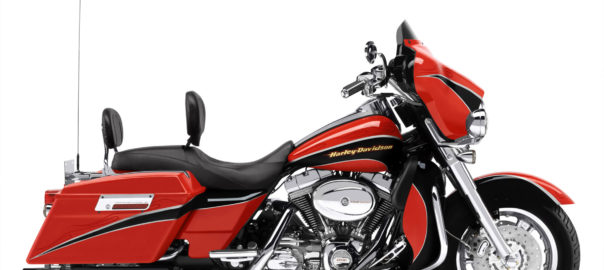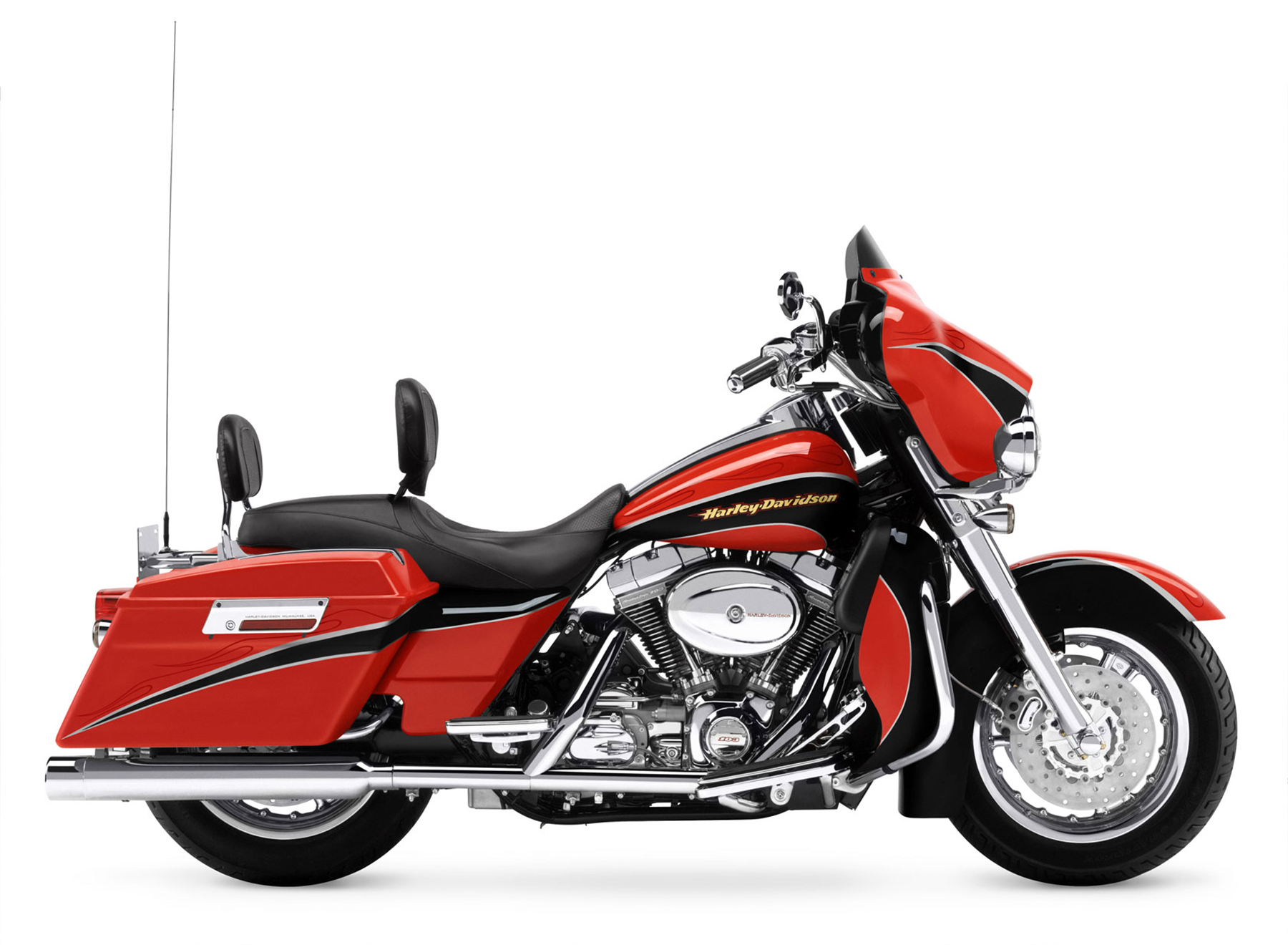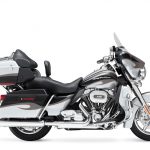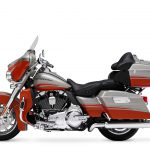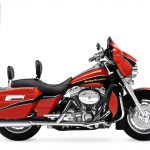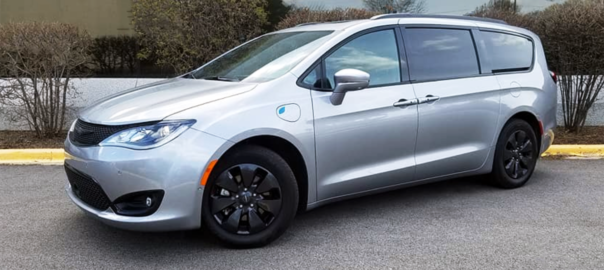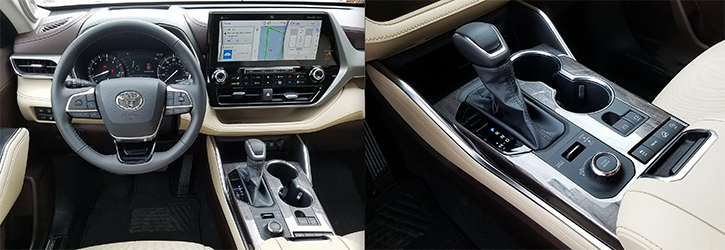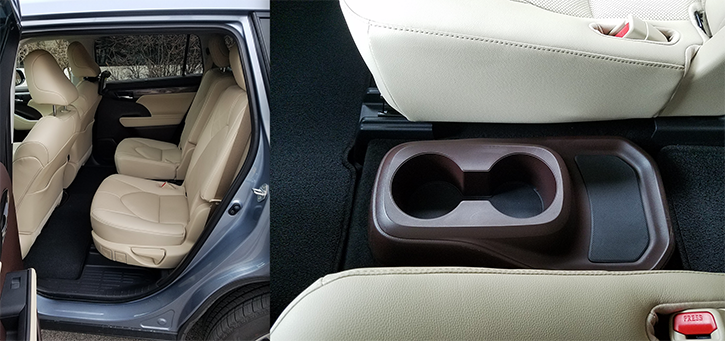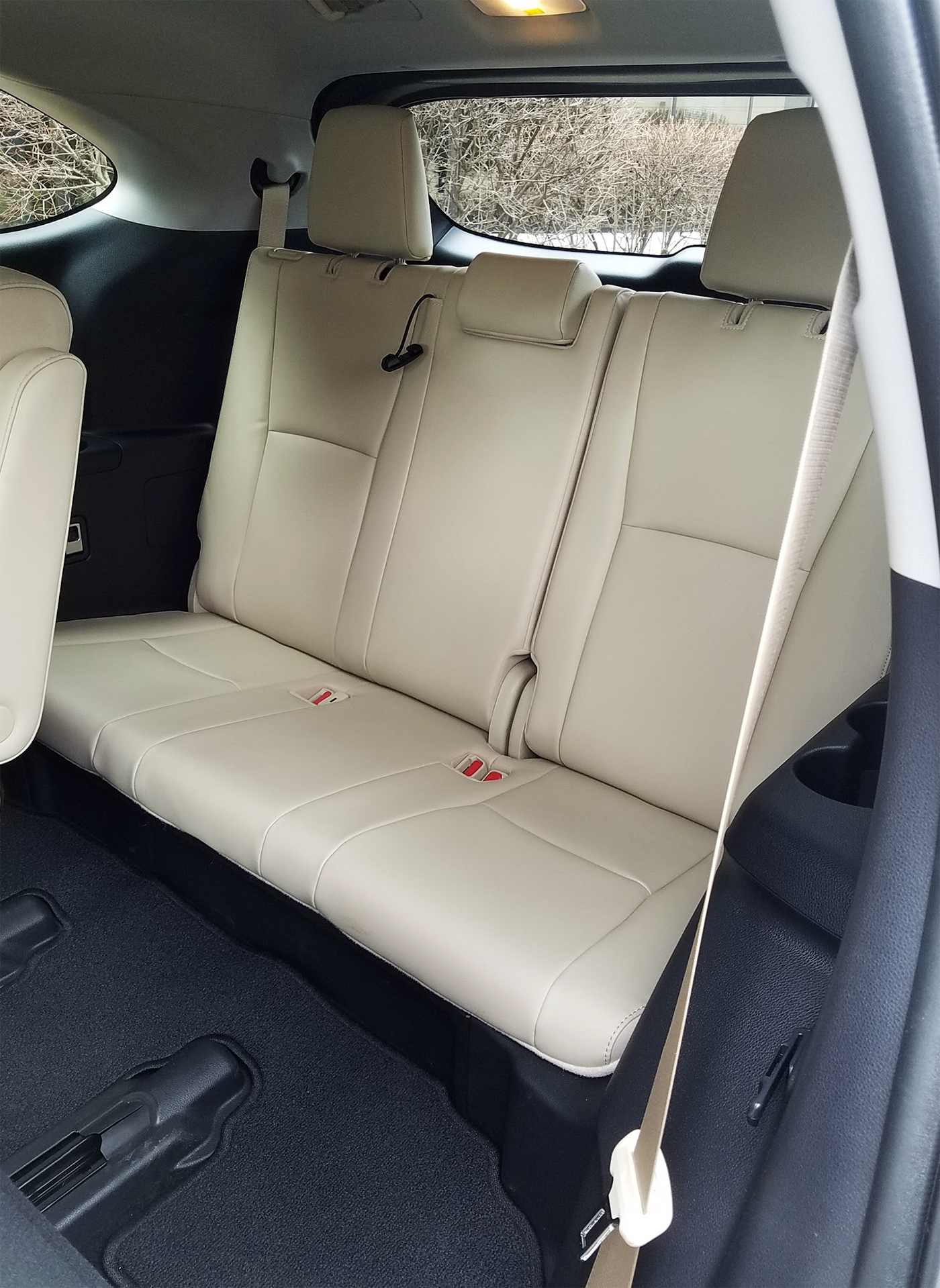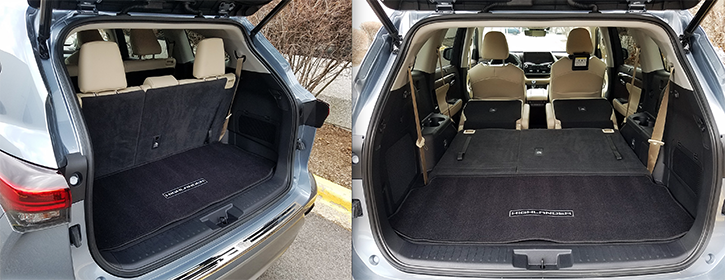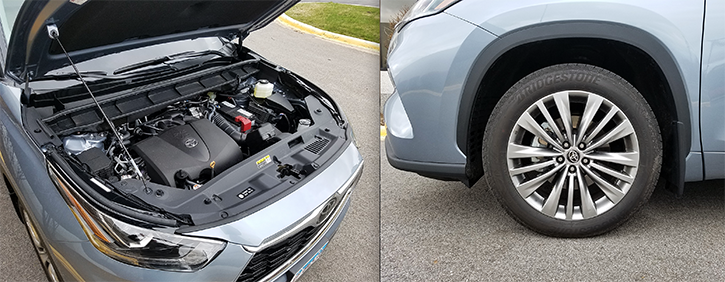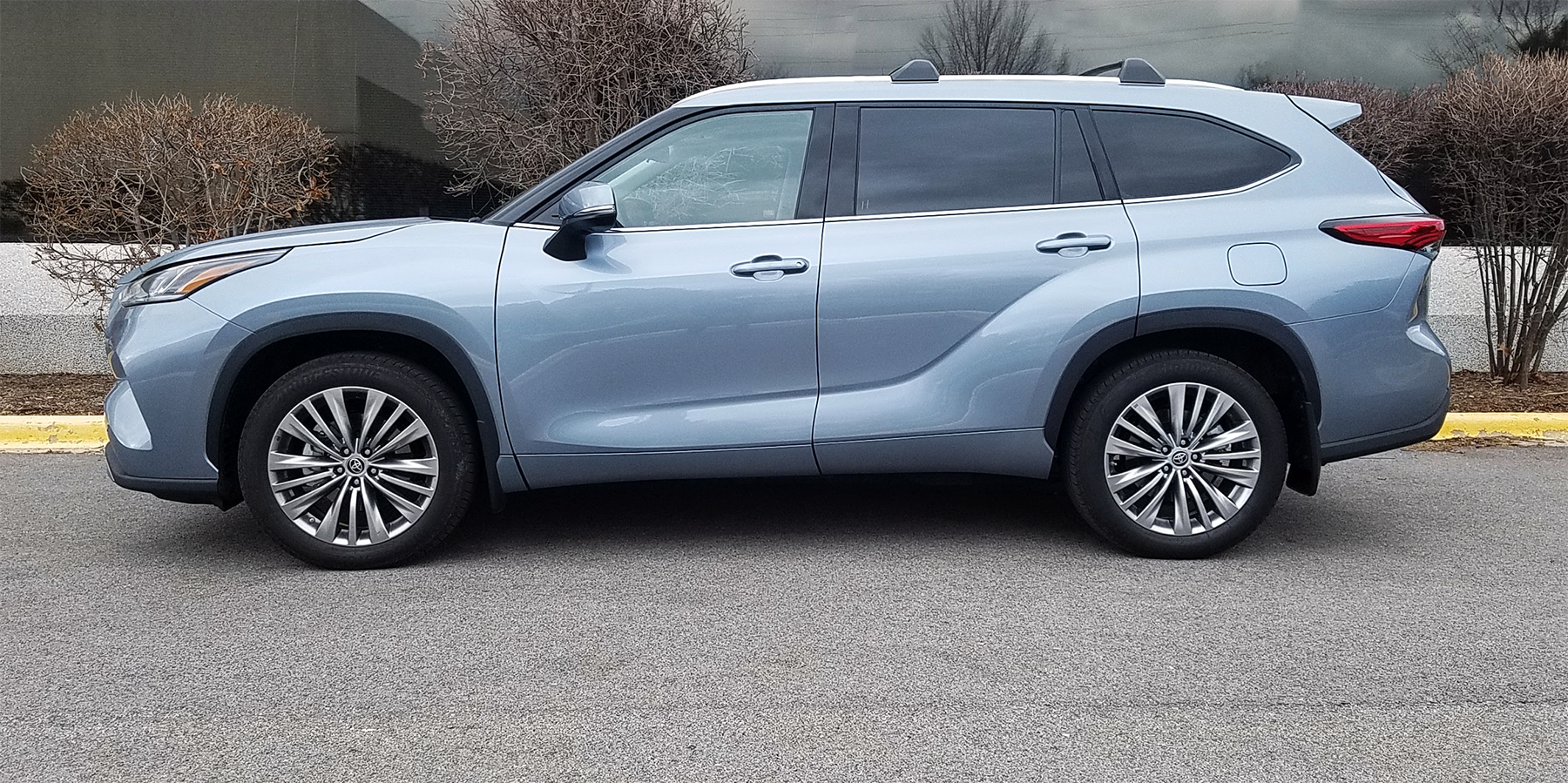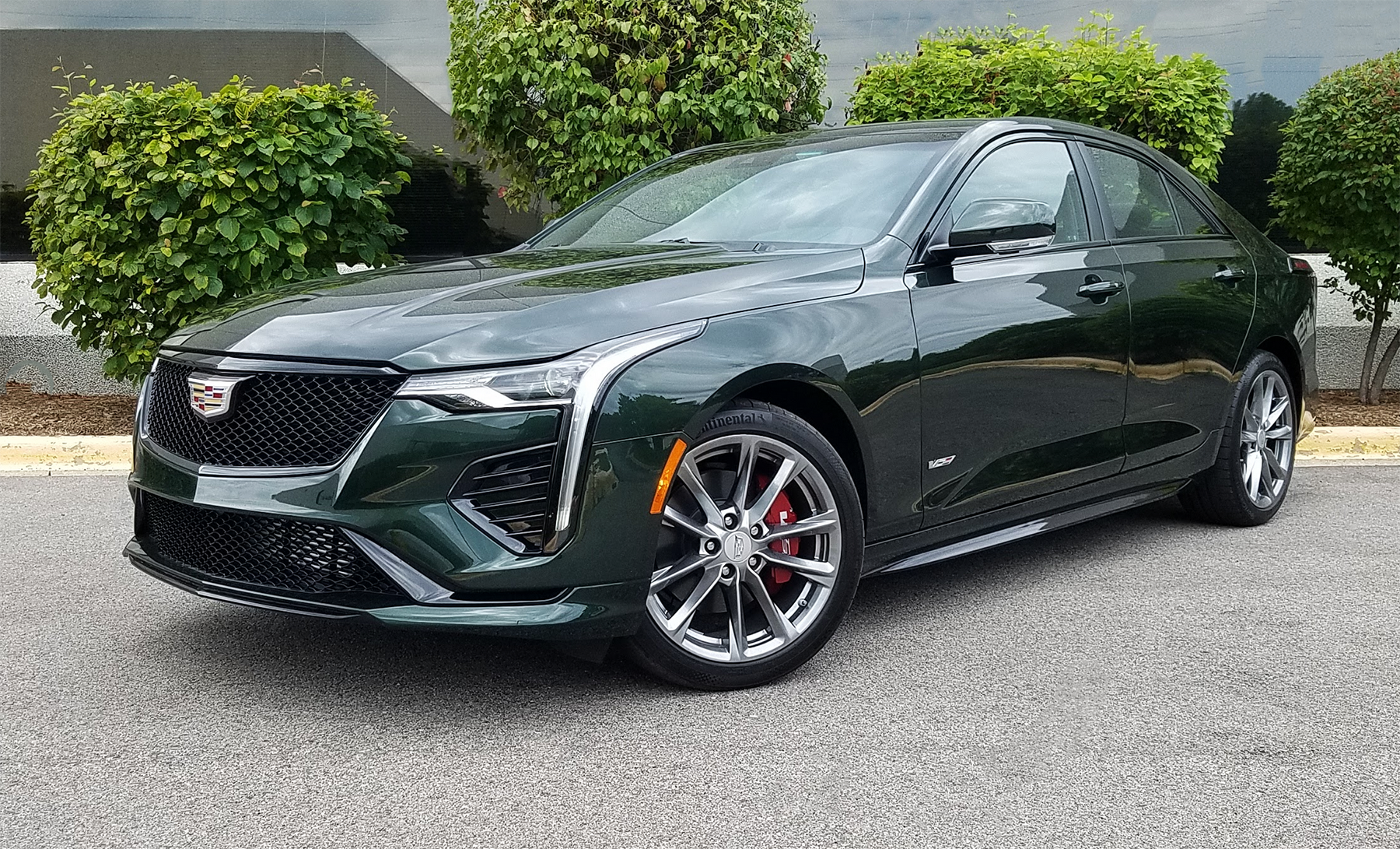
2020 Cadillac CT4-V in Evergreen Metallic (a $625 option)
2020 Cadillac CT4-V
Class: Premium Compact Car
Miles driven: 223
Fuel used: 9.9 gallons
Real-world fuel economy: 22.5 mpg
| CG Report Card | |
|---|---|
| Room and Comfort | B- |
| Power and Performance | B+ |
| Fit and Finish | B- |
| Fuel Economy | B- |
| Value | B- |
| Report-card grades are derived from a consensus of test-driver evaluations. All grades are versus other vehicles in the same class. Value grade is for specific trim level evaluated, and may not reflect Consumer Guide’s impressions of the entire model lineup. | |
| Big & Tall Comfort | |
| Big Guy | B |
| Tall Guy | B- |
| Big & Tall comfort ratings are for front seats only. “Big” rating based on male tester weighing approximately 350 pounds, “Tall” rating based on 6’6″-tall male tester. | |
| Drivetrain | |
| Engine Specs | 325-hp 2.7-liter |
| Engine Type | Turbo 4-cyl |
| Transmission | 10-speed automatic |
| Drive Wheels | AWD |
Driving mix: 35% city, 65% highway
EPA-estimated fuel economy: 20/28/23 (city, highway, combined)
Fuel type: Premium gas recommended
Base price: $44,495 (not including $995 destination charge)
Options on test vehicle: Driver Awareness Plus Package ($800), Evergreen Metallic paint ($625), Cold Weather Package ($600), red brake calipers ($595), all-wheel drive ($500)
Price as tested: $48,610
More CT4 price and availability information
Quick Hits
The great: Competitive pricing; crisp handling paired with decent ride quality
The good: 2.7-liter engine delivers satisfying power; configurable drive modes help tailor driving personality to suit driver preference and road conditions
The not so good: Interior materials and overall refinement come up a bit short of class leaders’; cramped rear seat; AWD takes a bit of a toll on fuel economy
John Biel
Opting for the performance model in any vehicle line that offers one commonly comes with a list of “yeah, buts.” There will be added purchase cost. Ride may be a little rougher than the average commuter and passengers prefer. Fuel economy almost always suffers, and costlier premium-grade gas is usually required for optimal performance.

The CT4-V (or V-Series) sits atop the CT4’s model lineup–its starting MSRP is $44,495, making it the only CT4 trim level with a base price above $40,000. The V’s standard equipment list includes features such as a mechanical limited-slip differential, performance traction-management system, and a sport-tuned suspension.
Yeah, all those things can be said for the 2020 Cadillac CT4-V (which, confusingly, Cadillac also calls “V-Series”), the hotted-up version of Caddy’s brand-new premium-compact sedan. But when those of us at Consumer Guide who drove a CT4-V weeks after testing a cushier CT4 Premium Luxury talked it over, we realized that we liked the “V” better. A little extra horsepower never hurts, and the V-Series has that. However, we were also impressed by ride and handling characteristics that seemed more dialed in.
Quick Spin: 2020 Lexus ES 300h Ultra Luxury
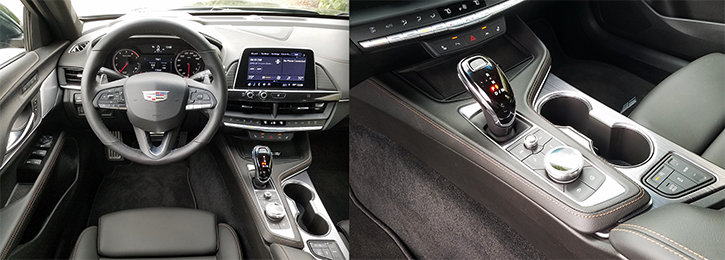
Even in top-line trim, the CT4’s interior isn’t quite as upscale as its European competition, but it has a clean, sporty look nonetheless. We appreciated the easy-to-use physical buttons and knobs instead of touch-sensitive controls, but the unusual “push-pull” shift lever can be a bit awkward for some drivers.
The CT4-V has a starting price (with delivery) of $45,490. However, our tester was an all-wheel-drive version that costs $1100 more—$500 for the AWD driveline and $600 for a “mandatory-option” Cold Weather Package with heated front seats and steering wheel. With all options, including the Driver Awareness Plus Package, Evergreen Metallic paint, and red-painted brake calipers, the test car came to $48,610.
Test Drive: 2020 Cadillac CT4 Premium Luxury
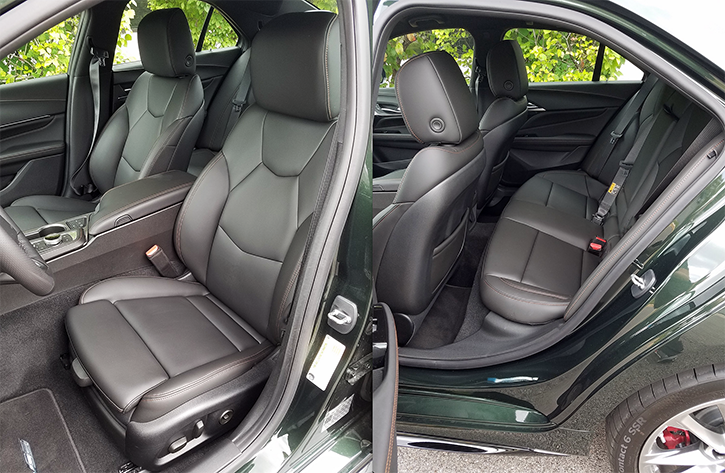
The CT4’s front seats offer decent space, even for big and tall occupants, but rear-seat space is at a premium–which is typical for the premium compact car class. Legroom quickly grows tight behind a tall front-seater.
What that buys is a 325-horsepower 2.7-liter 4-cylinder engine with a “dual-volute” turbocharger. That’s 15 more horsepower than the optional 2.7 that was in our CT4 Premium Luxury makes. There’s also 30 lb-ft more torque, 380 lb-ft at 2000-4000 rpm. V-Series Acceleration is brisk and well parsed by the effective and smooth 10-speed automatic transmission. EPA estimates for fuel economy are 20 mpg in city driving, 28 in highway running, and 23 mpg combined, but this reviewer didn’t quite hit the combined figure at 22.71 mpg even though just 16 percent of the 60.6 miles he covered were in city-type operation.

Cargo volume isn’t a strong point of most premium compact cars, and the CT4 comes up a bit short of some class rivals. There’s a middling 10.7 cubic feet of trunk space, and the load floor is a bit uneven.
There’s also a considerably different chassis and running-gear complement with a sport-tuned suspension, mechanical limited-slip rear differential, 235/40R18 summer tires mounted on 18-inch Pearl-Nickel-finish alloy wheels, and uprated Brembo disc brakes in front. (The rear-drive V-Series also has Magnetic Ride Control electronic variable damping not included on the all-wheeler.) Ride is a little stiffer on the hard-sided, low-profile run-flat rubber, but the stickier tires aid dry-surface grip. The test car handled nicely in quick transitions and stayed pleasingly flat turning through a little complex of esses we sometimes drive. Brake action and response are quick and confidence inducing.
Some of the extra that Cadillac wrings out of the CT4 V-Series comes via higher-order technology. The Performance Traction Management varies traction, stability, and chassis control through a “Track” mode with five incremental settings: “Wet,” “Dry,” “Sport,” “Race 1,” and “Race 2.” Launch control is provided for hotshoes who want to get off the dime without slip-sliding away. Drivers can create a custom blend of ride and performance characteristics from the various drive modes, then access that package whenever desired by pressing a “V-Mode” thumb button on the steering wheel.
As the only CT4 with a base price above $40,000, V-Series extras don’t stop on the spec sheet. It looks the part with black body highlights including the diamond-mesh grille and extensions to the body-color rocker moldings, a body-color rear spoiler, bright-tipped quad exhaust outlets, and neutral-density gray-tinted taillamp lenses. Drivers grip a leather-wrapped steering wheel with a thicker rim and dimpled hand grips. When the urge to shift hits, the driver can take advantage of paddles behind the steering wheel or the “Electronic Precision Shift” lever on the console. Other model-specific standard features are:
- power seatback side bolsters on the front seats
- 4-way power driver and front-passenger lumbar control
- manual driver and front-passenger cushion extenders
- alloy pedal faces
- carpeted floor mats with V-Series logo
- dark-finish front-door sill-plate covers
- Bose 14-speaker surround-sound audio system
- wireless charging
- rotary infotainment controller
As in some other CT4s, the V also comes with the Cadillac User Experience (CUE) infotainment system, Apple CarPlay/Android Auto compatibility, satellite and HD radio, dual-zone climate control, 8-way power front seats with driver’s-seat memory, forward-collision alert, and automatic emergency braking Notable, to some degree, is what the V-Series doesn’t have for the price. Things like leather upholstery, navigation, and blind-spot and rear cross-traffic alerts are extra-cost options (the latter two as part of the $800 Driver Awareness Plus Package).
Quick Spin: 2020 Genesis G70 3.3T Sport
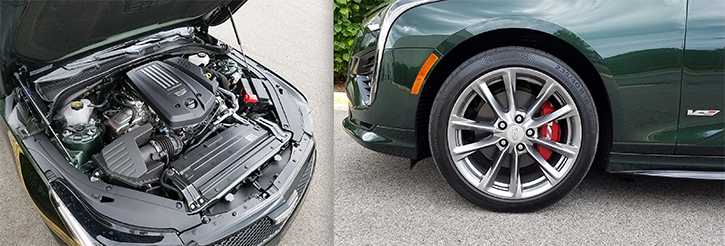
The CT4-V’s turbo 2.7-liter 4-cylinder gets a 15-hp bump over the Premium Luxury model’s 2.7, for a total of 325 hp. Eighteen-inch alloy wheels with a painted Pearl Nickel finish are standard, but red brake calipers are a $595 upgrade.
In terms of space and user convenience, a CT4 is a CT4 is a CT4. There’s a comfortable degree of passenger room in front, and tolerable legroom in back for two adults. Driver vision could be better. Cabin storage for personal items is average (rear doors lack pockets or even bottle holders). Driving controls show up cleanly, and CUE is pretty easy to work. Audio and other functions can be handled directly on the 8-inch touchscreen, but if you prefer, there’s a console dial for remote control of the system. It takes lots of buttons to run the climate system, including repetitive-push temperature and fan-speed switches. The trunk floor is uneven throughout, with different portions at different heights, and overall capacity of 10.7 cubic feet trails others in the class. Rear seats fold in a 60/40 split, but a bulkhead behind the seats could complicate loading of some long loads.
Is the Cadillac CT4-V less than perfect in some ways? Yeah . . . but there’s no denying that it is an entertaining driver that’s competitively priced, and that makes it worthy of consideration from anyone in the market for a small premium sedan.
Test Drive: 2020 Alfa Romeo Giulia Ti Lusso
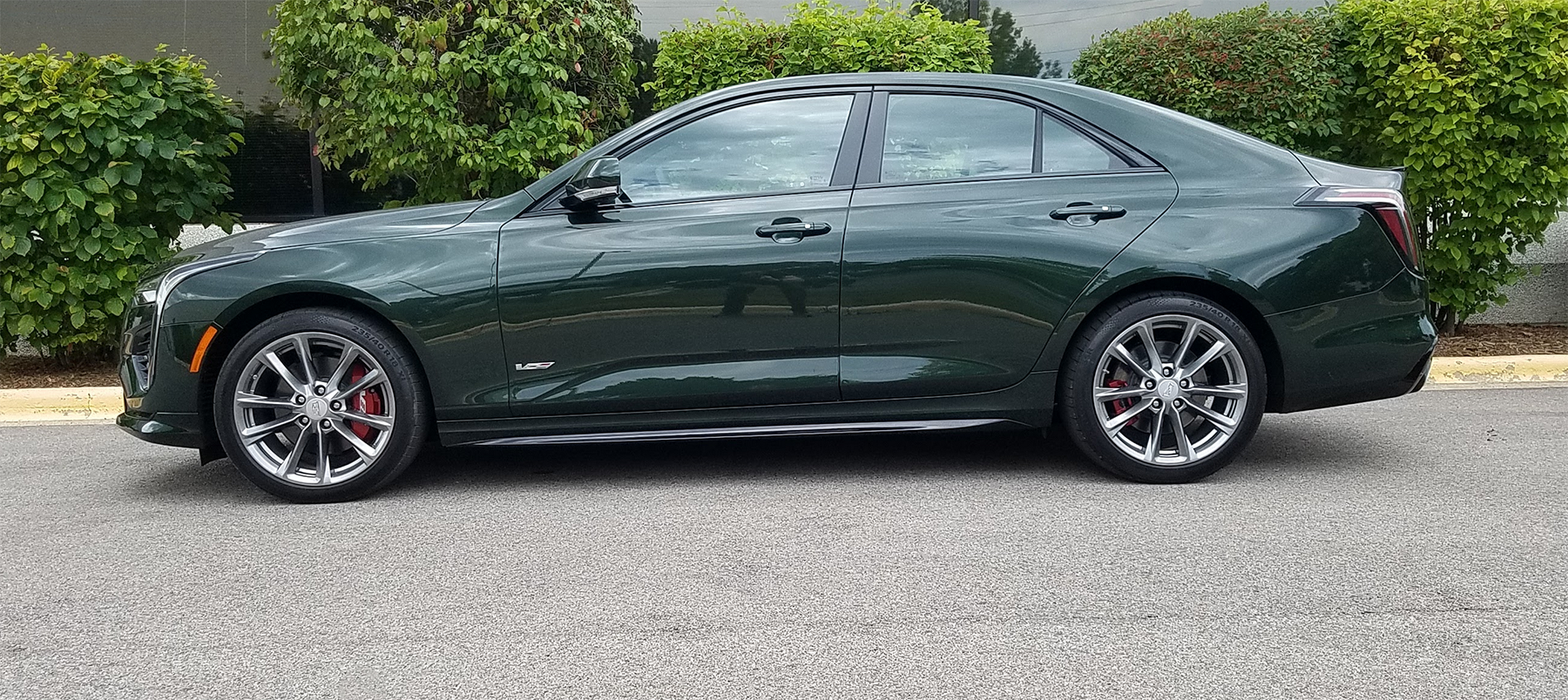
It’s currently the sportiest, spendiest model in the Cadillac CT4 lineup, but the CT4-V is still a strong value-for-the-dollar proposition compared to the primary rivals in its class. If 325 horsepower isn’t enough for you, note that a super-performance CT4-V Blackwing model–which should offer at least 400 horsepower–is in the works.
Click below for enlarged images
Listen to the very entertaining Consumer Guide Car Stuff Podcast
2020 Cadillac CT4-V Gallery
2020 Cadillac CT4-V


